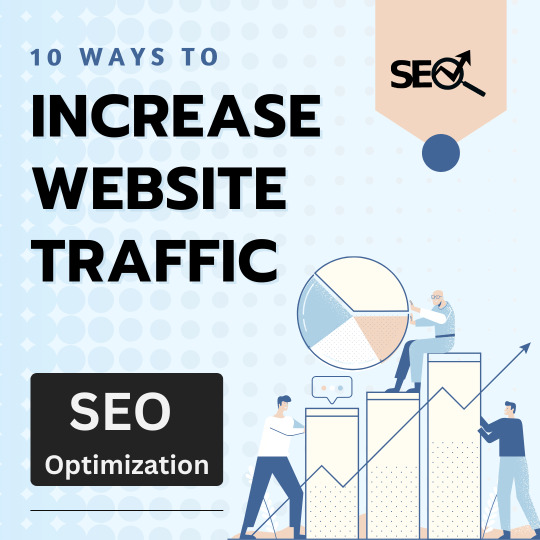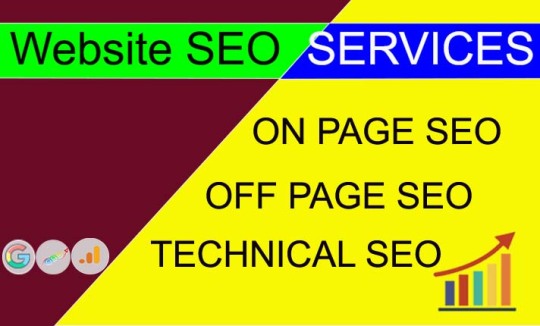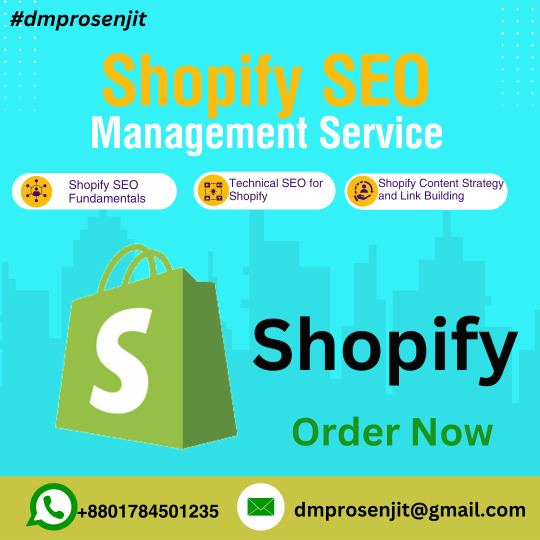#Shopifyseo
Text
ARE YOU FACING ANY CHALLENGES AS A SHOPIFY STORE OWNER ?
https://zeep.ly/NBOtx

#shopifypromotion#shopify#shopifystore#shopifymarketing#shopifydropshipping#shopifysales#ecommerce#shopifywebsite#ecommercemarketing#shopifyseller#shopifyseo#seo#shopifyexpert#ecommercewebsite#shopifypicks#shopifytraffic#ecommercepromotion#shopifybusiness#shopifydropshippingstore#ecommercetraffic#ecommercesales#ecommerceseo#shopifydeveloper#shopifystoreowners#shopifywinningproducts#shopifysellers#shopifysmallbusiness#shopifyplus#shopifyproduct#shopifydrops
2 notes
·
View notes
Text
Why SEO Optimization is the best way of marketing to increase sales by ranking e-commerce websites?
In the dynamic landscape of digital marketing, Search Engine Optimization (SEO) stands out as the undisputed champion when it comes to boosting sales for e-commerce websites. As someone deeply immersed in the realm of online business, I've come to appreciate the unparalleled benefits that SEO brings to the table. Some important points are given below:
Visibility and Traffic:
SEO enhances a website's visibility on search engines, driving organic traffic and increasing the chances of attracting potential customers.
Targeted Audience:
By optimizing for relevant keywords, SEO ensures that the website reaches an audience actively searching for products or services, improving the likelihood of conversion.
Credibility and Trust:
Higher search engine rankings establish credibility and trust among users, leading to increased confidence in the website and higher conversion rates.
Cost-Effectiveness:
Compared to paid advertising, SEO provides a sustainable, long-term marketing solution without incurring ongoing costs per click or impression.
Adaptability:
SEO strategies can evolve to align with changing search engine algorithms, ensuring that the website remains relevant and continues to attract customers over time.
Global Reach:
SEO enables e-commerce websites to reach a global audience, expanding market reach beyond geographical limitations.
User Experience:
SEO involves optimizing website structure and content, leading to an improved user experience, which can positively impact customer satisfaction and repeat business.
Competitive Advantage:
Websites with higher search rankings gain a competitive edge, standing out in a crowded e-commerce landscape and attracting more customers than competitors.
Analytics and Insights:
SEO tools provide valuable analytics and insights, allowing businesses to understand user behavior, preferences, and trends to refine their marketing strategies.
Long-Term Results:
Unlike some marketing tactics that offer short-term gains, SEO provides enduring results, sustaining and growing organic traffic over time.

2 notes
·
View notes
Text

We provide Onpage SEO, Offpage SEO and Technical SEO.
[email protected]/seoshahidul@
3 notes
·
View notes
Text
7 E-Commerce Tools I Use to Help My Clients
Use these digital tools to scale faster.
Read:
✅An Ecommerce Platform
Use Shopify or WooCommerce to build your online store.
These platforms are loaded with such features that help you sell online in a more feasible way.
Get discovered faster, build a repute, add unlimited products, manage customer complaints, and so much more.
✅Mailchimp
To maintain a 1:1 relation with your customers is a must in this brand-rich era.
And that’s only possible with email marketing.
Out of many, Mailchimp seems the most affordable and effective email marketing tool for small businesses.
Run email campaigns, gather subscribers, offer discounts, build a healthy relationship with customers, and do many more amazing things.
✅Buffer
It’s a platform where you can manage all your social media accounts.
I use this for my agency profiles, and it’s helping me so much.
(Fun fact: this post was also scheduled in Buffer)
✅Ahref
Tracking your online presence is critical to come up with better strategies.
Ahref’s all-in-one marketing toolkit allows you to analyze your product pages, site structure, content, competitors, and so much more.
Similar to Ahref, there are others like MOZpro and SEMRush.
✅Sellbrite
Just like Buffer, where you can manage your social media, Sellbrite helps you manage your business across different marketplaces.
You can manage inventory and keep an eye on everything on Sellbrite – whether you sell on Amazon, Etsy, Ebay, or more.
It’s a real time saver.
✅Ecwid
Ecwid helps you create ‘cart’ buttons on Instagram, Facebook, and your own site.
Visitors can instantly click on the buy button of the post and reach directly at your product page.
It creates a seamless and easy buying experience.
✅Botsify
It’s a chatbot that communicates with your site’s visitors, and helps them buy your products.
A chatbot can answer 80% of the questions to your visitors.
Use them for better conversions.
— – — – —
Are you using any of these tools?
If not, why not?
Also if you want to crush your sales goals this new year, send me a message. Let’s plan ahead.
3 notes
·
View notes
Text

Are you looking to improve your Shopify store's visibility? A Shopify SEO expert freelancer can help. With the right strategies, your online store can attract more customers and increase sales. At SEO Freelancer Gurgaon, we specialize in optimizing Shopify websites to rank higher on search engines. Let's make your business shine online!
#ShopifySEO#SEOFreelancerGurgaon#EcommerceGrowth#OnlineStoreSuccess#DigitalMarketing#FreelancerServices
0 notes
Text
How to Enhance Your Shopify Store’s Mobile Loading Speed and Performance

As mobile commerce continues to grow, ensuring that your Shopify store performs optimally on mobile devices is essential for maintaining customer satisfaction and driving conversions. A fast, smooth mobile experience can significantly impact user engagement and sales. Here’s a detailed guide on how to improve your Shopify store’s mobile loading speed and overall performance.
Optimize Images
Images are often the largest files on your website, so optimizing them is crucial for fast loading times.
Resize Images: Ensure that images are not larger than necessary. For instance, a thumbnail image should not be larger than 150x150 pixels. Resize images to the exact dimensions needed on your site.
Compress Images: Use tools to reduce the file size of your images without compromising quality. Compression helps decrease the amount of data that needs to be loaded, speeding up your site.
Improve Page Load Times
The speed at which your pages load can directly affect user experience and SEO.
Minimize HTTP Requests: Each element on a page (like images, scripts, and stylesheets) requires an HTTP request. Reduce the number of elements and combine files where possible to minimize these requests.
Enable Compression: Use gzip compression to reduce the size of your CSS, HTML, and JavaScript files. This technique compresses these files on the server, which are then decompressed by the browser.
Implement Lazy Loading
Lazy loading defers the loading of images and videos until they are needed.
Deferred Media Loading: Implement lazy loading to ensure that media files load only when they come into the viewport of the user’s device. This reduces initial page load times and saves bandwidth.
Simplify Navigation
Mobile users often navigate with touch, so your site should be easy to navigate on small screens.
Streamlined Menus: Use a simple, intuitive menu structure. Consider using a hamburger menu or dropdowns that can accommodate smaller screens without overwhelming the user.
Accessible Buttons: Ensure that buttons are large enough to tap easily and that there is adequate spacing between clickable elements to prevent accidental clicks.
Optimize Checkout Process
A complicated checkout process can lead to cart abandonment, especially on mobile devices.
Simplified Checkout: Reduce the number of steps required to complete a purchase. Use autofill options to speed up form completion and ensure that payment buttons are easily accessible and prominently displayed.
Mobile-Friendly Forms: Design forms with larger fields and buttons to make them easier to use on mobile devices.
Minify CSS and JavaScript
Minification involves removing unnecessary characters from code to reduce file size.
Clean Code: Minify your CSS and JavaScript files to remove spaces, comments, and unused code. This can significantly reduce the file size and improve load times.
Leverage Browser Caching
Browser caching stores static resources on the user’s device, so they don’t have to be downloaded again on subsequent visits.
Set Expiry Dates: Configure caching rules to specify how long browsers should store certain files. This helps speed up repeat visits to your site.
Optimize Third-Party Apps
Third-party apps can add functionality but also impact performance.
Evaluate App Performance: Regularly review the apps installed on your Shopify store. Remove any that are not essential and ensure that the ones you keep are optimized for performance and do not excessively impact load times.
Regular Performance Monitoring
Regular monitoring helps identify and address performance issues promptly.
Conduct Performance Tests: Regularly test your store’s performance using built-in tools within Shopify or other available resources. Look for metrics like page load times and overall site speed to identify areas that need improvement.
Conclusion
Enhancing your Shopify store’s mobile loading speed and performance involves a combination of optimizing images, simplifying navigation, and streamlining the checkout process. By implementing these strategies, you can create a faster, more efficient mobile experience that meets customer expectations and supports higher conversion rates. Regular performance monitoring and adjustments will ensure your store remains in top shape, keeping your mobile users satisfied and engaged.
0 notes
Text

Creative Marketing Ideas to Boost Sales and Profits. Marketing can improve your sales and profits. However, it is not about the number of marketing ideas you put out there, but in the quality of your marketing.
#ShopifyDropshipping#ShopifySEO#OnlineStoreWithShopify#ShopifyBusiness#ShopifyCommunity#ShopifySelling#ShopifyTutorial#ShopifySuccessStory
0 notes
Text

🚀 Ready to transform your online business? Contact us now to get started with our expert Shopify Building Services! 📞✨ Don't miss out on creating a high-performing, professional store that drives sales and enhances your brand. Reach out today! 🌟💼
📧 Contact Us Now
#🚀 Ready to transform your online business? Contact us now to get started with our expert Shopify Building Services! 📞✨ Don't miss out on cre#professional store that drives sales and enhances your brand. Reach out today! 🌟💼#📧 [Contact Us Now](https://wa.me/message/XLRURHJCZR4ZD1)#---#ShopifyBuildingServices#ShopifyExperts#OnlineBusiness#EcommerceSolutions#ShopifyStoreSetup#ShopifyDesign#ShopifySupport#DigitalMarketing#ShopifySEO#BusinessGrowth#ShopifyCustomization#ProfessionalEcommerce#ShopifyHelp#BoostSales#ShopifySuccess
1 note
·
View note
Text
You need the ultimate Shopify SEO service to get top Google rankings.
In today’s digital marketplace, a standout Shopify store isn’t just about great products and a sleek design—it’s about visibility. Optimizing your Shopify store for SEO is important for achieving top rankings on Google.
Why Shopify SEO is most important:
Shopify powers millions of eCommerce websites worldwide, making it a competitive arena where visibility can make or break your business. Effective Shopify SEO ensures that your products are found by potential customers when they search for relevant keywords on Google.
Here are some essential strategies and services you can consider:
Keyword Research: Identify relevant keywords that your target audience is searching for. Tools like Google Keyword Planner, Ahrefs, or SEMrush can help in this regard.
On-Page Optimization: Ensure each product page and category page is optimized with:
Optimized meta titles and descriptions.
Relevant keywords in headings (H1, H2 tags).
Clear and concise URLs.
High-quality, unique content that includes keywords naturally.
Site Structure and Navigation: Make sure your site is easy to navigate with a logical hierarchy (categories, subcategories) that makes sense for both users and search engines.
Page Speed Optimization: A fast-loading website is important for SEO. Use tools like Google PageSpeed Insights to identify and fix any issues.
Mobile Optimization: Given the rise in mobile searches, ensure your Shopify store is fully responsive and provides a great user experience on mobile devices.
Image Optimization: Optimize product images with descriptive filenames and alt texts to improve visibility in image search results.
Content Marketing: Create a blog on Shopify and regularly publish high-quality content that addresses customer questions, showcases product uses, or provides industry insights. This helps build authority and attracts natural backlinks.
Backlink Building: Earn high-quality backlinks from reputable sites in your industry. This can be achieved through guest blogging, partnerships, or creating shareable content.
Local SEO (if applicable): If you have a physical store or serve specific geographic areas, optimize for local search by including location-specific keywords and creating local business listings (Google My Business, Yelp, etc.).
Analytics and Monitoring: Use tools like Google Analytics and Google Search Console to monitor your site's performance, track keywords, and identify opportunities for improvement.
Conclusion
Achieving top Google rankings for your Shopify store requires a comprehensive approach to SEO that goes beyond basic optimization. It demands a deep understanding of your target audience, strategic implementation of SEO best practices, and continuous monitoring and adaptation to algorithm changes.
Ready to elevate your Shopify store’s SEO game? Contact us today to learn more about our specialized Shopify SEO services and how we can help you achieve top rankings on Google. Let’s take your eCommerce success to new heights together!
#ShopifySEO#EcommerceSEO#SEOStrategy#DigitalMarketing#OnlineBusiness#SearchEngineOptimizationm#BusinessGrowth#SEOConsultant#ContentMarketing#KeywordResearc WebsiteOptimization
0 notes
Text

I will do Shopify SEO expert services and Shopify marketing
With a decade of SEO expertise, I've guided numerous clients to success while managing my own agency. Whether you seek e-commerce optimization or flawless local SEO, I'm your go-to professional. My forte lies in implementing white-hat on-site and off-site SEO techniques that propel your website to higher search rankings, amplifying your business's visibility and driving targeted traffic. I can create SEO driven blog content that drives traffic and boosts the ranking of your website. As a highly rated SEO Course Instructor on I'm ready to kickstart your SEO today.
#shopify#shopifypicks#shopifystore#Shopify#shopifyseller#shopifypics#shopifyexperts#shopifywebsite#shopifypartner#shopifyhandmade#Shopifyseo#shopifyexpert#shopifyplus#shopifyvintage#shopifyshop#shopifybusiness#shopifytips#shopifythailand#shopifyunite#shopifysellers#shopifypartners#shopifythemes#shopifydevelopers#shopifystores#shopifymeetupmanchester#dmprosenjit#dmprosenjito#prosenjitbarmon#freelancerprosenjit
0 notes
Text
Best Shopify Development Company

Are you looking for the best Shopify development company? Look no further than Phanom Professionals! With our expert team and unparalleled expertise, we deliver top-notch Shopify solutions tailored to your business needs. Trust us to elevate your online store to new heights of success
#shopify#shopifyexpert#shopifydevelopmentagency#shopifyappdevelopment#headlessshopify#shopifycustomization#shopifythemedevelopment#shopifymobileappdevelopment#shopifyseo#shopifyomnichannel#shopifydropshipping#shopifdevelopment#techexpertise#shopifyexperts#shopifystore#shopifywebsite#shopifytips#shopifydesign#shopifyapp
0 notes
Text
What are Shopify Product Tags | How to add Product Tags to boost your SEO?
youtube
Hey there! Ever wondered what Shopify product tags are and how they can supercharge your SEO? 🚀 In this video, we'll break down what product tags are, why they're important for your online store's visibility, and step-by-step instructions on how to add them to skyrocket your SEO rankings! Let's dive in!
#ShopifySEO#keywordoptimization#seostrategy#seocurrent#digitalmarketing#youtube#marketing#ProductTags#SEOBoost#OnlineStore#SEOStrategy#SmallBusinessTips#Youtube
0 notes
Text
instagram
5 Reasons Why Your Business Needs Ecommerce Seo
eCommerce is becoming more and more necessary as internet business models become more and more prevalent.
.
Since most shoppers prefer to spend their time online, having an eCommerce site is essential if you want to attract new clients.
.
Nevertheless, being visible to the appropriate audience at the appropriate moment is just as important as having an online business.
.
eCommerce SEO can help you achieve the desired visibility. Here are a few reasons why your business needs eCommerce SEO services.
0 notes
Text
Strategic Shopify SEO Company for Optimal E-commerce Growth

Experience exponential growth in your online business with our specialized services as the 'Strategic Shopify SEO Company.' We offer tailored solutions designed to optimize every aspect of your Shopify store, ensuring optimal e-commerce growth. Our strategic approach encompasses comprehensive SEO strategies, from keyword optimization to site enhancements, aimed at elevating your store's visibility and attracting a broader audience. Partner with us to navigate the competitive digital landscape successfully, and watch as your Shopify store flourishes with increased traffic, improved rankings, and sustained e-commerce success.
#ShopifySEO#EcommerceGrowth#SEOStrategies#OptimalVisibility#DigitalMarketing#OnlineSuccess#EcommerceSolutions#StrategicOptimization#KeywordOptimizaton#SearchEngineRankings
1 note
·
View note
Text

Looking for a Shopify SEO expert in Gurgaon? At SEO Freelancer Gurgaon, we specialize in optimizing your Shopify store to improve rankings, increase traffic, and boost sales. With our expert SEO strategies, we help your business stand out in search results. Contact us today to grow your online store and achieve lasting success.
#ShopifySEO#GurgaonSEOExpert#SEOFreelancer#EcommerceSEO#ShopifyOptimization#BoostYourStore#SEOServicesGurgaon#ShopifyExpert
0 notes
Text
How to Improve Your Shopify Store’s Mobile Loading Speed and Overall Performance
In today’s digital world, where mobile devices account for a substantial portion of e-commerce traffic, optimizing your Shopify store for mobile performance is essential. A slow-loading mobile site can lead to frustrated customers and lost sales. Fortunately, there are several effective strategies you can employ to enhance your Shopify store’s mobile loading speed and overall performance. Here’s a comprehensive guide to help you achieve that.
Optimize Images
Images are often the largest elements on a page, so optimizing them can have a significant impact on load times.
Resize and Compress: Ensure that images are no larger than necessary. Use tools like TinyPNG or ImageOptim to compress images while maintaining quality. Shopify supports WebP format, which offers better compression than JPEG or PNG.
Use Proper Formats: Choose the right format for different types of images. For photographs, JPEGs are ideal. For images with transparency, PNGs are more suitable.
Leverage Browser Caching
Browser caching helps to store frequently accessed resources on users' devices, reducing load times for repeat visits.
Enable Caching: While Shopify manages most caching automatically, ensure that your theme and apps are optimized to take full advantage of caching. This reduces the amount of data that needs to be loaded with each visit.
Minimize HTTP Requests
Reducing the number of HTTP requests can significantly improve load times.
Reduce Elements: Limit the number of elements on each page, such as scripts, stylesheets, and images. This can help decrease the number of requests made by the browser.
Combine Files: Where possible, combine multiple CSS and JavaScript files into single files. This reduces the number of requests needed to load your page.
Use Lazy Loading
Lazy loading ensures that images and videos are loaded only as they come into view, rather than all at once.
Deferred Loading: Implement lazy loading for images and videos to improve initial page load times. This technique delays the loading of media that isn’t immediately visible to the user, thus speeding up the overall page load.
Optimize Shopify Apps
Third-party apps can impact your store’s performance.
Review Apps: Regularly audit the apps you’re using. Remove any that are not essential and ensure that the ones you keep are optimized for performance. Some apps might slow down your site, so choose ones that are known for efficiency.
Implement Content Delivery Network (CDN)
A CDN distributes your content across multiple servers globally, reducing latency.
Utilize CDN: Shopify automatically uses a CDN to serve your store’s assets from servers closest to your users. Ensure that your assets, such as images and scripts, are properly cached and served via the CDN to improve load times.
Minify CSS and JavaScript
Minifying your CSS and JavaScript files reduces their size and improves loading speed.
Clean Code: Use tools like UglifyJS or online minifiers to remove unnecessary whitespace, comments, and code from your CSS and JavaScript files. This reduces their file size and speeds up load times.
Optimize Mobile Checkout
A smooth and quick checkout process is crucial for mobile users.
Streamline Checkout: Simplify the checkout process by reducing the number of fields and steps required to complete a purchase. Enable auto-fill for forms and ensure that the checkout button is prominently visible and easily tappable.
Regular Performance Audits
Regularly testing your site’s performance can help identify areas for improvement.
Use Tools: Utilize tools like Google PageSpeed Insights, GTmetrix, or Lighthouse to assess your site’s performance. These tools provide valuable insights and recommendations for further optimization.
Conclusion
Improving your Shopify store’s mobile loading speed and overall performance requires a combination of strategies, from optimizing images to streamlining the checkout process. By implementing these best practices, you can enhance the user experience, reduce bounce rates, and potentially increase conversions. Regular performance audits will help you stay on top of any issues and continue to provide a fast, responsive shopping experience for your customers.
0 notes